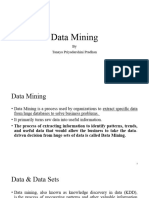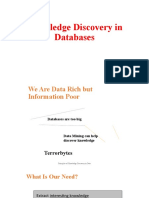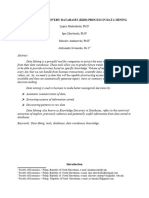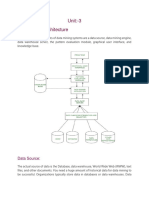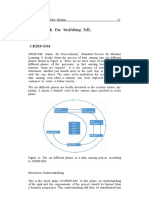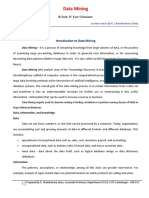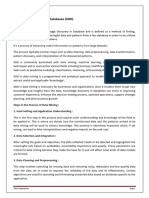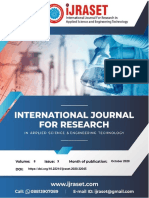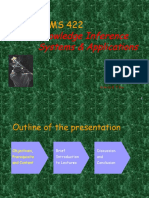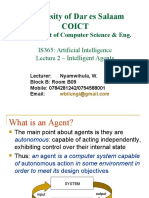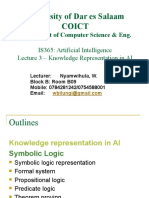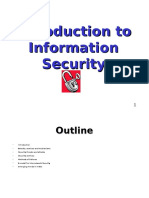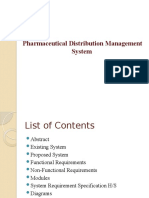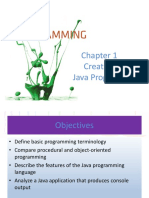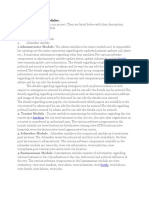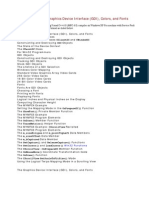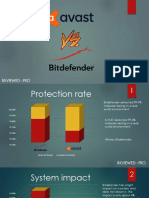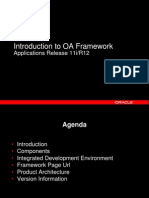05/07/2020 KDD Process in Data Mining - Javatpoint
KDD- Knowledge Discovery in Databases
The term KDD stands for Knowledge Discovery in Databases. It refers to the broad procedure of discovering
knowledge in data and emphasizes the high-level applications of specific Data Mining techniques. It is a field of
interest to researchers in various fields, including artificial intelligence, machine learning, pattern recognition,
databases, statistics, knowledge acquisition for expert systems, and data visualization.
The main objective of the KDD process is to extract information from data in the context of large databases. It does
this by using Data Mining algorithms to identify what is deemed knowledge.
The Knowledge Discovery in Databases is considered as a programmed, exploratory analysis and modeling of vast
data repositories.KDD is the organized procedure of recognizing valid, useful, and understandable patterns from
huge and complex data sets. Data Mining is the root of the KDD procedure, including the inferring of algorithms that
investigate the data, develop the model, and find previously unknown patterns. The model is used for extracting the
knowledge from the data, analyze the data, and predict the data.
https://www.javatpoint.com/kdd-process-in-data-mining 1/10
�05/07/2020 KDD Process in Data Mining - Javatpoint
The availability and abundance of data today make knowledge discovery and Data Mining a matter of impressive
significance and need. In the recent development of the field, it isn't surprising that a wide variety of techniques is
presently accessible to specialists and experts.
The KDD Process
The knowledge discovery process(illustrates in the given figure) is iterative and interactive, comprises of nine steps.
The process is iterative at each stage, implying that moving back to the previous actions might be required. The
process has many imaginative aspects in the sense that one cant presents one formula or make a complete scientific
categorization for the correct decisions for each step and application type. Thus, it is needed to understand the
process and the different requirements and possibilities in each stage.
The process begins with determining the KDD objectives and ends with the implementation of the discovered
knowledge. At that point, the loop is closed, and the Active Data Mining starts. Subsequently, changes would need to
be made in the application domain. For example, offering various features to cell phone users in order to reduce
churn. This closes the loop, and the impacts are then measured on the new data repositories, and the KDD process
again. Following is a concise description of the nine-step KDD process, Beginning with a managerial step:
https://www.javatpoint.com/kdd-process-in-data-mining 2/10
�05/07/2020 KDD Process in Data Mining - Javatpoint
1. Building up an understanding of the application domain
This is the initial preliminary step. It develops the scene for understanding what should be done with the various
decisions like transformation, algorithms, representation, etc. The individuals who are in charge of a KDD venture
need to understand and characterize the objectives of the end-user and the environment in which the knowledge
discovery process will occur ( involves relevant prior knowledge).
2. Choosing and creating a data set on which discovery will be performed
Once defined the objectives, the data that will be utilized for the knowledge discovery process should be determined.
This incorporates discovering what data is accessible, obtaining important data, and afterward integrating all the data
for knowledge discovery onto one set involves the qualities that will be considered for the process. This process is
important because of Data Mining learns and discovers from the accessible data. This is the evidence base for
building the models. If some significant attributes are missing, at that point, then the entire study may be ⇧
https://www.javatpoint.com/kdd-process-in-data-mining 3/10
�05/07/2020 KDD Process in Data Mining - Javatpoint
unsuccessful from this respect, the more attributes are considered. On the other hand, to organize, collect, and
operate advanced data repositories is expensive, and there is an arrangement with the opportunity for best
understanding the phenomena. This arrangement refers to an aspect where the interactive and iterative aspect of the
KDD is taking place. This begins with the best available data sets and later expands and observes the impact in
terms of knowledge discovery and modeling.
3. Preprocessing and cleansing
In this step, data reliability is improved. It incorporates data clearing, for example, Handling the missing quantities
and removal of noise or outliers. It might include complex statistical techniques or use a Data Mining algorithm in this
context. For example, when one suspects that a specific attribute of lacking reliability or has many missing data, at
this point, this attribute could turn into the objective of the Data Mining supervised algorithm. A prediction model for
these attributes will be created, and after that, missing data can be predicted. The expansion to which one pays
attention to this level relies upon numerous factors. Regardless, studying the aspects is significant and regularly
revealing by itself, to enterprise data frameworks.
4. Data Transformation
In this stage, the creation of appropriate data for Data Mining is prepared and developed. Techniques here
incorporate dimension reduction( for example, feature selection and extraction and record sampling), also attribute
transformation(for example, discretization of numerical attributes and functional transformation). This step can be
essential for the success of the entire KDD project, and it is typically very project-specific. For example, in medical
assessments, the quotient of attributes may often be the most significant factor and not each one by itself. In
business, we may need to think about impacts beyond our control as well as efforts and transient issues. For
example, studying the impact of advertising accumulation. However, if we do not utilize the right transformation at the
starting, then we may acquire an amazing effect that insights to us about the transformation required in the next
iteration. Thus, the KDD process follows upon itself and prompts an understanding of the transformation required.
5. Prediction and description
We are now prepared to decide on which kind of Data Mining to use, for example, classification, regression,
clustering, etc. This mainly relies on the KDD objectives, and also on the previous steps. There are two significant
⇧
objectives in Data Mining, the first one is a prediction, and the second one is the description. Prediction is usually
https://www.javatpoint.com/kdd-process-in-data-mining 4/10
�05/07/2020 KDD Process in Data Mining - Javatpoint
referred to as supervised Data Mining, while descriptive Data Mining incorporates the unsupervised and visualization
aspects of Data Mining. Most Data Mining techniques depend on inductive learning, where a model is built explicitly
or implicitly by generalizing from an adequate number of preparing models. The fundamental assumption of the
inductive approach is that the prepared model applies to future cases. The technique also takes into account the
level of meta-learning for the specific set of accessible data.
6. Selecting the Data Mining algorithm
Having the technique, we now decide on the strategies. This stage incorporates choosing a particular technique to
be used for searching patterns that include multiple inducers. For example, considering precision versus
understandability, the previous is better with neural networks, while the latter is better with decision trees. For each
system of meta-learning, there are several possibilities of how it can be succeeded. Meta-learning focuses on
clarifying what causes a Data Mining algorithm to be fruitful or not in a specific issue. Thus, this methodology
attempts to understand the situation under which a Data Mining algorithm is most suitable. Each algorithm has
parameters and strategies of leaning, such as ten folds cross-validation or another division for training and testing.
7. Utilizing the Data Mining algorithm
At last, the implementation of the Data Mining algorithm is reached. In this stage, we may need to utilize the
algorithm several times until a satisfying outcome is obtained. For example, by turning the algorithms control
parameters, such as the minimum number of instances in a single leaf of a decision tree.
8. Evaluation
In this step, we assess and interpret the mined patterns, rules, and reliability to the objective characterized in the first
step. Here we consider the preprocessing steps as for their impact on the Data Mining algorithm results. For
example, including a feature in step 4, and repeat from there. This step focuses on the comprehensibility and utility of
the induced model. In this step, the identified knowledge is also recorded for further use. The last step is the use, and
overall feedback and discovery results acquire by Data Mining.
9. Using the discovered knowledge
https://www.javatpoint.com/kdd-process-in-data-mining 5/10
�05/07/2020 KDD Process in Data Mining - Javatpoint
Now, we are prepared to include the knowledge into another system for further activity. The knowledge becomes
effective in the sense that we may make changes to the system and measure the impacts. The accomplishment of
this step decides the effectiveness of the whole KDD process. There are numerous challenges in this step, such as
losing the "laboratory conditions" under which we have worked. For example, the knowledge was discovered from a
certain static depiction, it is usually a set of data, but now the data becomes dynamic. Data structures may change
certain quantities that become unavailable, and the data domain might be modified, such as an attribute that may
have a value that was not expected previously.
← prev next →
Help Others, Please Share
https://www.javatpoint.com/kdd-process-in-data-mining 6/10
�05/07/2020 KDD Process in Data Mining - Javatpoint
Learn Latest Tutorials
MySQL Python Smartsheet Affiliate M. Testing
Proc*C SMM GDB Fuzzy Logic DHTML
Classroom AutoCad
Preparation
Aptitude Reasoning Verbal A. Interview Company
Trending Technologies ⇧
https://www.javatpoint.com/kdd-process-in-data-mining 7/10
�05/07/2020 KDD Process in Data Mining - Javatpoint
AI AWS Selenium Cloud Hadoop
ReactJS D. Science Angular 7 Blockchain Git
ML DevOps
B.Tech / MCA
DBMS DS DAA OS C. Network
Compiler D. COA D. Math. E. Hacking C. Graphics ⇧
https://www.javatpoint.com/kdd-process-in-data-mining 8/10
�05/07/2020 KDD Process in Data Mining - Javatpoint
Software E. Web Tech. Cyber Sec. Automata C
C++ Java .Net Python Programs
Control S. Data Mining
https://www.javatpoint.com/kdd-process-in-data-mining 9/10
�05/07/2020 KDD Process in Data Mining - Javatpoint
https://www.javatpoint.com/kdd-process-in-data-mining 10/10





